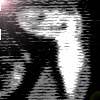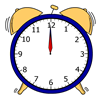Skip over navigation
At a junction, imagine turning the direction you want to go. What part of a full turn would this be? How many degrees would it be?
You could draw out the map on the ground outside (ask someone to help you) and walk along the route.



Or search by topic
Number and algebra
Geometry and measure
Probability and statistics
Working mathematically
Advanced mathematics
For younger learners
Six Places to Visit
Age 7 to 11
Challenge Level 





- Problem
- Getting Started
- Student Solutions
- Teachers' Resources
At a junction, imagine turning the direction you want to go. What part of a full turn would this be? How many degrees would it be?
You could draw out the map on the ground outside (ask someone to help you) and walk along the route.
You may also like
Clock Hands
This investigation explores using different shapes as the hands of the clock. What things occur as the the hands move.
Watch the Clock
During the third hour after midnight the hands on a clock point in the same direction (so one hand is over the top of the other). At what time, to the nearest second, does this happen?
Take the Right Angle
How many times in twelve hours do the hands of a clock form a right angle? Use the interactivity to check your answers.

